I recently had a chat with one of my favourite designers, Gudrun Johnston, and thought I’d bring this to you today. I just love Gudrun’s work. She has this knack of producing designs that are are always classic, timeless and wearable, often using stitch patterns (particularly those originating from Shetland) in really innovative and interesting ways. And if you’ve ever knit one of Gudrun’s designs, you’ll know that she always writes a clear and eminently knitterly pattern. She’s a great designer creating beautiful knitwear, and her Shetland Trader Book Two is for me one of the real stand-out collections of recent months. I wanted to talk to Gudrun about her work, and hear more about producing this stunning collection, and I thought you’d like to hear more about it too.
If you’d like to get a real flavour of Shetland Trader Book Two (and its beautiful Unst location) Gudrun’s photographer, Kathy Cadigan, shot this lovely video, which makes a great accompaniment to the interview.
1. Can you tell us a little bit about your knitting background, Gudrun? Did you learn to knit as a child? And when did knitting turn into a business for you?
Despite being born in Shetland and having a mother who was designing knitwear during my early years, I actually didn’t learn to knit until I was around age 9 and it didn’t happen in Shetland!
I was living on a different island off the west coast of Scotland (the Isle of Rum, to be precise) and was attending a teeny primary school. At one point my brother and I were the only pupils. Like I said, teeny. The schoolteacher introduced me to knitting, though all I remember is creating a rather unattractive pastel-green ribbed vest.
I didn’t pick it up again until around 11 years ago. I was more than rusty, but I found all the basics were still there. I was quickly obsessed with creating knitted items and dove head first into exploring the possibilities. In terms of it becoming an actual business… that more gradually crept up on me.
Like other indie designers I owe a lot to the launch of Ravelry. It was perfect timing for me in that I was just getting started writing and publishing my own patterns and here was this easy platform from which I could connect with knitters all over the world! It really snowballed from there with all sorts of great connections being made with people in the industry.
 Nikka Vord from Shetland Trader Book Two
Nikka Vord from Shetland Trader Book Two
2. I often find that absence from a well-known and well-loved place can shape oneʼs sense of it as much as constant presence. Has this been your experience regarding your relationship with Shetland? And if so, does this occasional distance / absence have any influence on your designs?
My relationship with Shetland has had a huge influence on my designs. Although I very much identify with being from Shetland now, that wasn’t the case for most of my childhood. I was born there (and my great grand parents were from Shetland) but after 13 years of living there my parents relocated to mainland Scotland when I was around 4.
We made occasional visits to Shetland over the years but it wasn’t until my parents retired back there about 12 years ago that I have been a more frequent visitor. This coincided with my interest in knitting. So as I was getting reacquainted with the Shetland landscape and people I was also learning about the rich knitting traditions.
Now I get to visit Shetland more frequently and always look forward to the time I spend there. Every visit opens up a new opportunity to connect and dig deeper, to learn new things about the wool industry and history, see new designers work and get inspired, quite often by the landscape. I feel like I’m from Shetland now in a way I didn’t when I was a kid, I like to imagine that I’ll end up there more permanently at some point in the not too distant future.

The Shetland Trader in the 1970s
3. Your mum, Patricia Johnston, worked in a similar field and I was lucky enough to be able to see one of her original designs in a recent exhibition in Lerwick. That exhibition really made me appreciate your mumʼs important position as one of a handful of Shetland women who, in the 1970s, took the knitwear industry into their own hands, and began to shape its direction in really innovative and creative ways. Your brand now shares its name with hers, and I wonder if you could say a little about how her precedent inspired (and continues to inspire) you?
I am so proud of what my mum accomplished with her business, and being able to carry on the Shetland Trader name is such an honor. I was incredibly moved to see her sweater in the exhibition and so glad to see her get recognition for her role in the Shetland knitwear industry. Despite not being a Shetlander (she’s English), or a knitter, she blended the traditional with the contemporary to create some incredibly unique garments.
As these were all made to order garments we don’t have many in our possession any longer. I have a few of her kids garments that were worn by my siblings and I. They’ve been passed on to our children. Believe it or not, they’re still going strong. I have a folder of photographs showing all of my mother’s designs. I often look through it for inspiration. I also more recently came across two sweaters that were purchased by a Shetlander at a local sale. These particular sweaters really speak to her eye for detail. Unusually, they blend Fair Isle with lace, and have beautiful bell sleeves and high turtlenecks. Very seventies, yet still current!
My mum had taste with her own unique flair. And a good work ethic that inspires me every day.
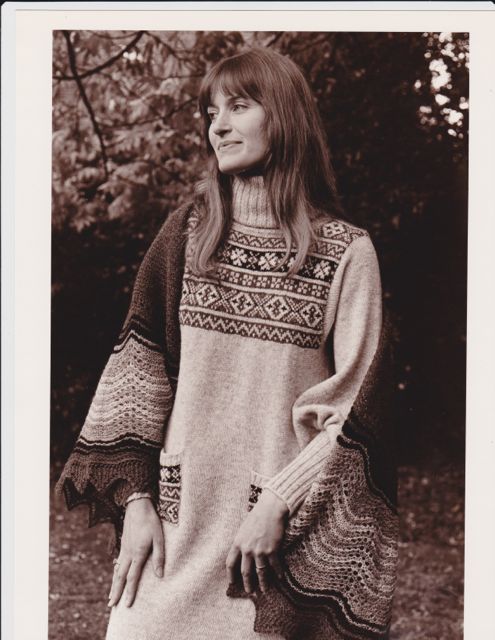
Patricia Johnston’s beautiful and innovative designs
4. Shetland Trader book 2 is a wonderfully balanced collection, with different signature pieces featuring a variety of texture, colour and openwork; different yarn styles and weights and a wide range of techniques. I know from experience that creating this balance can be an awful lot of work! Can you say a little about how you went about planning the collection?
I would love to be able to say that all of those aspects were very carefully planned out, but that isn’t totally true! I knew that for this second collection I wanted Shetland yarns to feature heavily. That served as the foundation for many of the designs. I had already worked with several of the yarns available, but others were less familiar to me. I spent time swatching and gathering ideas.
My first collection had featured Shetland Lace patterns. Although I wanted to bring this into the new collection, I also wanted to explore the use of Fair Isle this time around. I had a lot of ideas for this collection, some came fully formed and definitely influenced other pieces in the collection and others never made it in. Sometimes narrowing down all the possibilities is the hardest part!
5. The collection is photographed in a beautiful Shetland location, Belmont House, in Unst. This extraordinary setting has a wonderful ease and tranquility, and the house and your designs somehow really speak to one another! Can you tell us a little about this location and how it inspired the collection?
I was just starting to put the collection together when I first visited Belmont House, a self-catering property in a marvelously remote location. I was with fellow designer (and friend) Mary Jane Mucklestone. We were considering Belmont for our Shetland trips and had organized to take a look around. The property – inside and out – blew us away. It was so beautiful. Some very dedicated and passionate people had meticulously restored it, with perfect attention to detail.
It wasn’t quite right for our trips, but I quickly realized how perfect it would be for photographing the new collection! Choosing yarn colours for the collection, I referenced the palette from Belmont House often as well as the general Shetland landscape. Having spent time inside the house meant it was easier for me to plan for the photoshoot too.
We stayed in the house over 3 days and had lots of time to find the best backdrops for each design. With it being summertime, we had plenty of light to play with, including the beautiful Shetland simmer dim. The quality of that evening light is remarkable. Aside from being there to shoot for the book, I had a contingent of my extended family there. We had a lot of fun!
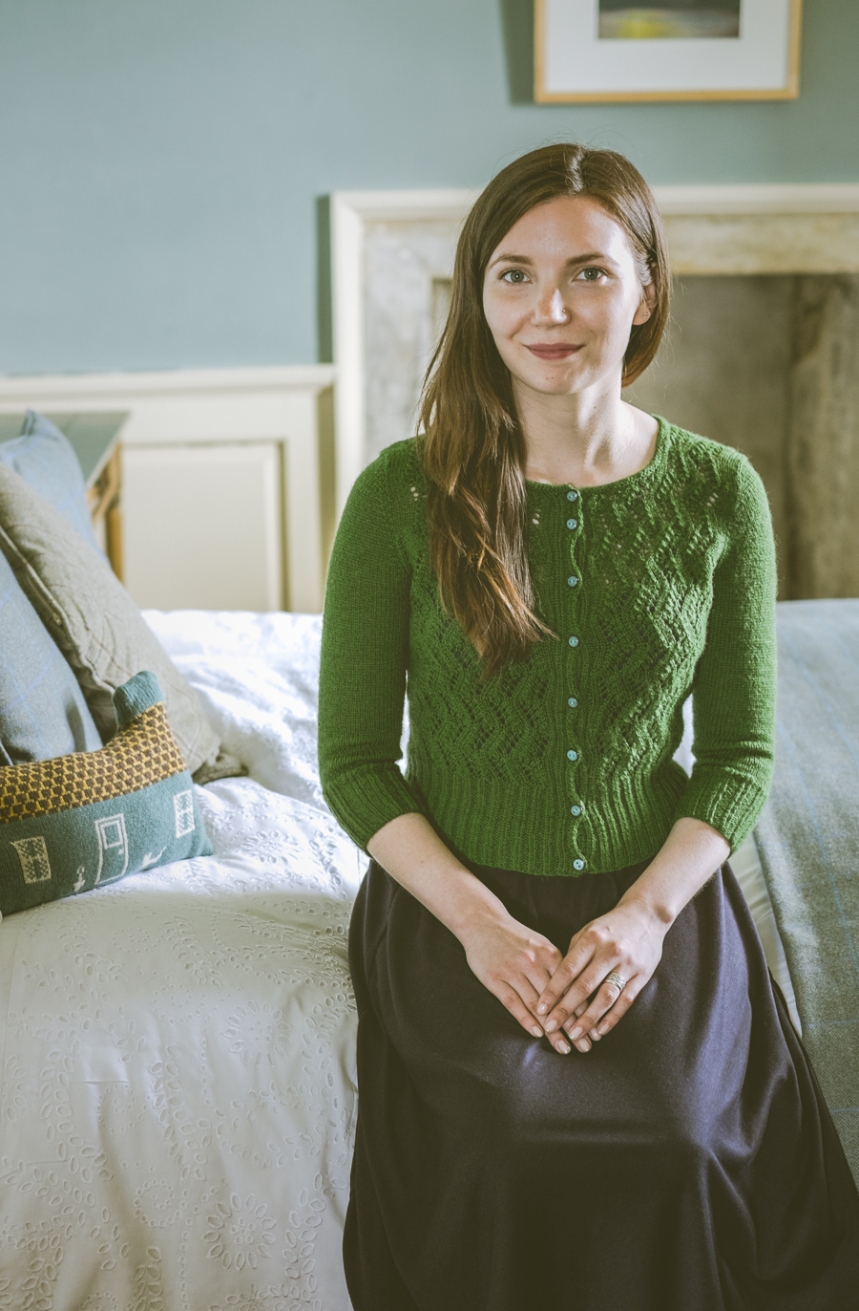
Ella Gordon modelling Belmont. Note the Crofthoose Cushion to the left!
6. Designers often work very differently, and Iʼm always interested to hear about the stages of their process. Can you talk us through the process of creating one of the designs in Shetland Trader book 2?
One of my favorites from the collection is the Belmont cardigan, so let me tell you about that!
Usually I begin a design with sketching and swatching and this was true for Belmont. I knew I wanted it to be a fitted and cropped style of cardigan, and I knew exactly the yarn I wanted to use (in this case Jamieson and Smith Shetland Heritage in a lovely fresh green). I had already decided on the lace pattern I wanted to use. It was a lace pattern that came about as the result of a knitting mistake made by a Shetland knitter. I had already used the same pattern in the Hermaness Hats (also part of this collection). So I spent time swatching and trying to figure out how I wanted the lace to sit on the fronts. I tend to knit fairly elaborate swatches to figure out any unusual shaping rather than doing lots of maths ahead of time. My brain works best that way. Once I settled on my idea, I figured out the numbers for the size I was making. I will usually just write the pattern out only in the size I’m making and do the grading afterwards.
In this case my notions of what the gauge was like in a swatch became quite different once the knitting was underway. Because the fronts are all in lace and the back in Stockinette Stitch, there was going to be a difference in gauge. I didn’t compensate enough for that and once I was past the hem and working on the body (it is knit seamlessly bottom up) it was apparent that there was far too much fabric on the back! I had to completely rip back and re-do some numbers Not too drastic, but an example to me of how knitted fabric can surprise you!
 Vivian Ross Smith modelling Balta
Vivian Ross Smith modelling Balta
7. I think your work has an immediately recognisable aesthetic: thereʼs always a certain ease about it, and a way of making classic stitches feel unfussy, fresh and contemporary. Can you talk a little about the design styles and kinds of aesthetics that you draw on for inspiration?
Thank you.
I tend to wear fairly unfussy clothes. I don’t feel comfortable when there is too much going on in the fabric. No ribbons and frills for me! So I think when it comes to designing hand knits it’s natural for me to keep the lines clean and make the garment something that will appeal across the board. I am hugely influenced by the Shetland knitting traditions, the lace patterns in particular, and enjoy finding ways to use them in a contemporary context. You can find those clean lines in Shetland lace patterns as they are often very geometric and distinct. They can be elaborate and sometimes difficult to knit, but yet they retain a certain simplicity and timeless quality.
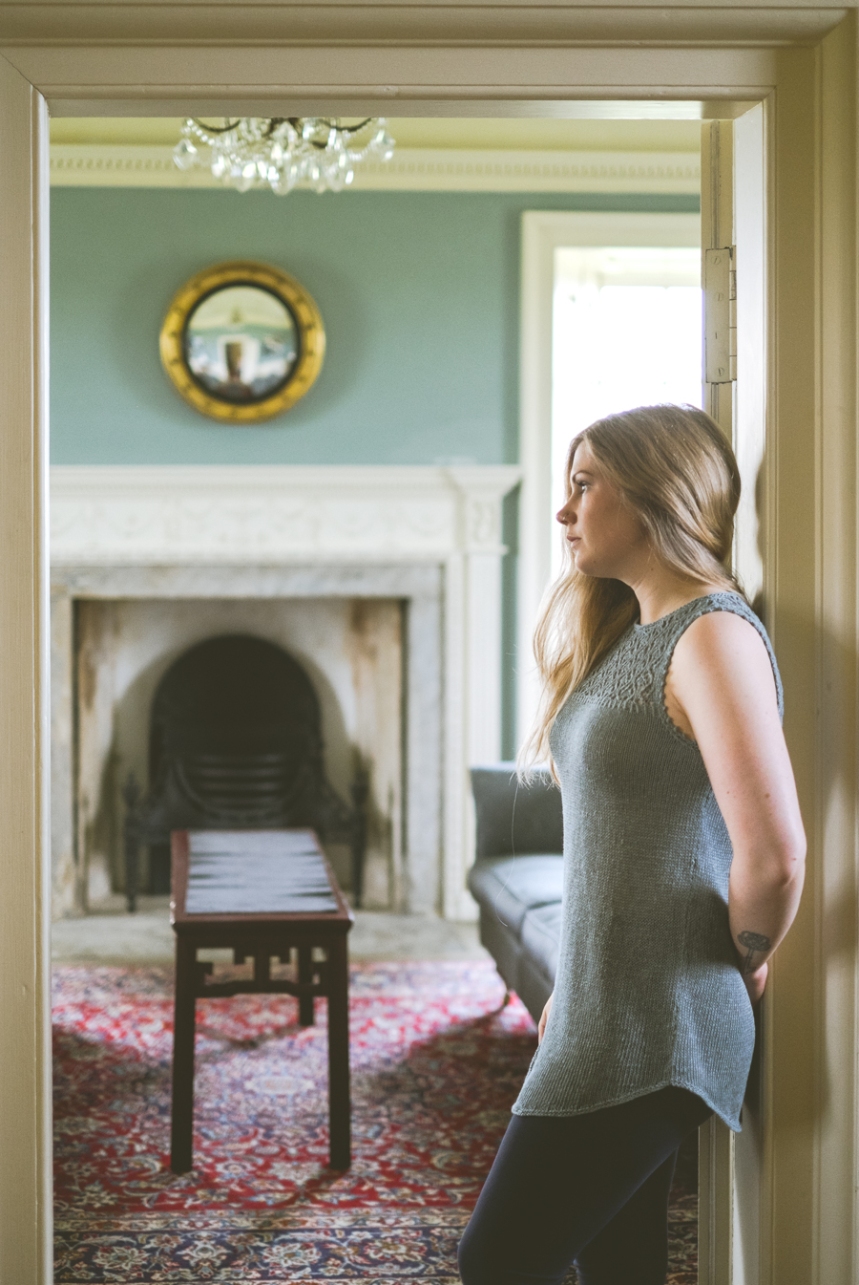
Balta
8. I find that it’s incredibly important to have a convivial and collaborative team of folk around me when working on a large project. Could you tell us about the different people involved in producing Shetland Trader Book 2?
I couldn’t agree with you more! It can be hard to work in isolation so much. When it comes to getting to work with other people it’s very refreshing.
Seeing as I knew that I would be in Shetland for the shoot it made sense to get some Shetland lassies involved in the modeling. I began by asking Ella Gordon, who you know well. I had met her several times and knew that she’d be a great model, especially as a wool lover and employee of Jamieson and Smith! I then figured it would be nice to have a second face for contrast and approached Ella’s friend Vivian (also a Shetlander). I had seen photos of her via Ella’s instagram feed. Thankfully, she was enthusiastic to join us too. This worked out really well as the two of them were very relaxed and comfortable during the shoot (and also just lovely to hang out with)!

Ella in Burrafith
The photographer, Kathy Cadigan, was also someone I already knew and liked. Conveniently enough, she had signed up to come on our first Shetland trip (which happened right before the shoot). I love Kathy’s aesthetic and energy and knew she would capture exactly what I was aiming for with this collection.
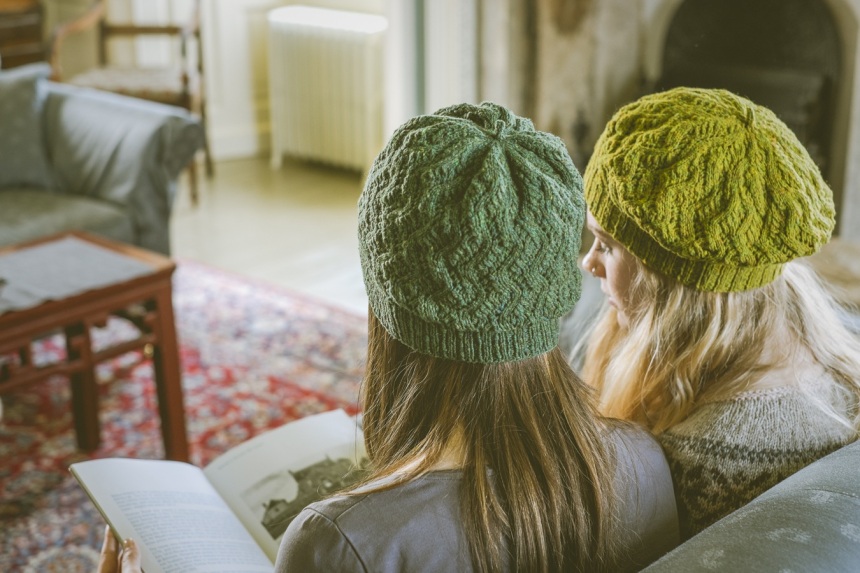
Ella and Vivian in Hermaness Hats
Mary Jane is not only a dear, dear friend of mine, but an experienced stylist. I was very pleased to have her there to keep tabs on all things style/clothing related!
On the technical side of things I had Carrie Hoge do all the graphic design. She had done such a lovely job on my first Shetland Trader collection. I feel very in tune with her whole design aesthetic.
For technical editing I had Heather Zoppetti (who is also my wholesaler and a wonderful designer in her own right). For sample knitting I had a trusted and exceptional knitter, Nicole Dupuis to help me out.The printing was done by Puritan Press, who had also produced my first book. They are a small press in New Hampshire and wonderful to work with! They even made sure to have some early books ready for me to collect and bring to Wool Week last year!
Oh, and I shouldn’t forget my extended family, who made meals for us all!
All of these people made the book what it is, and I’m so incredibly grateful to have been able to work with them all!
9. Can you tell us about the textile and knitting tours youʼve recently been organising in Shetland? Will those be running again this year?
Various people had asked both Mary Jane and me if we would ever consider doing trips to Shetland. We eventually thought why not! Our first two trips ran last year, one in the summer and the other during wool week. We had groups of 12 on each trip. The accommodation was in Burrastow House, another beautiful location on the west side of Shetland. We had the place to ourselves and the group were served delicious meals by the charming Belgian owner, Pierre.
The trips are heavily fiber focused, but we also wanted people to truly experience the Shetland landscape and it’s inhabitants. There were fiber related classes, visits to Jamieson and Smith and Jamieson’s yarn companies, visits to a working croft where we watched hand clipping of Shetland sheep (with the option to have a go), visits with local designers, talk and tour of the Shetland Museum Textile exhibit, a boat trip to see some birds and seals, and of course down time for everyone to do some of their own exploring!
The two trips are fairly similar with the biggest differences being the time of year and the fact that the Wool Week trip means there are even more knitters in Shetland and even more fibery things happening!
I’m pleased to say that they both seem to have been successes! We received very positive feedback from the groups. There are even 5 of them returning for their own trip to Shetland for Wool Week this year.
So yes, we are running them again in 2015! We have already built up an email list of potential participants, so they have had the initial information and option to sign up early. We will be opening the remaining spots up to the general public soon. Information can be found on my website.
10. Finally, whatʼs next for the Shetland Trader?
The next big thing for The Shetland Trader (and my family) is that it will be based in Scotland as of this summer! This will mean closer proximity to Shetland (we will be living in Edinburgh) and hence lots more opportunities to visit and gather inspiration! It will also make it easier to run the trips, and potentially mean I can do them more often.
In terms of the design side of things I am hoping to start work on another collection that would see some of my mother’s designs written up with some of my touches thrown in. Of course there will also continue to be collaborations with other yarn companies too!
Thanks so much for this illuminating chat, Gudrun! I’m really looking forward to seeing more of you when you return to bonnie Scotland!
You can find Gudrun here, and purchase copies of the Shetland Trader Book Two here

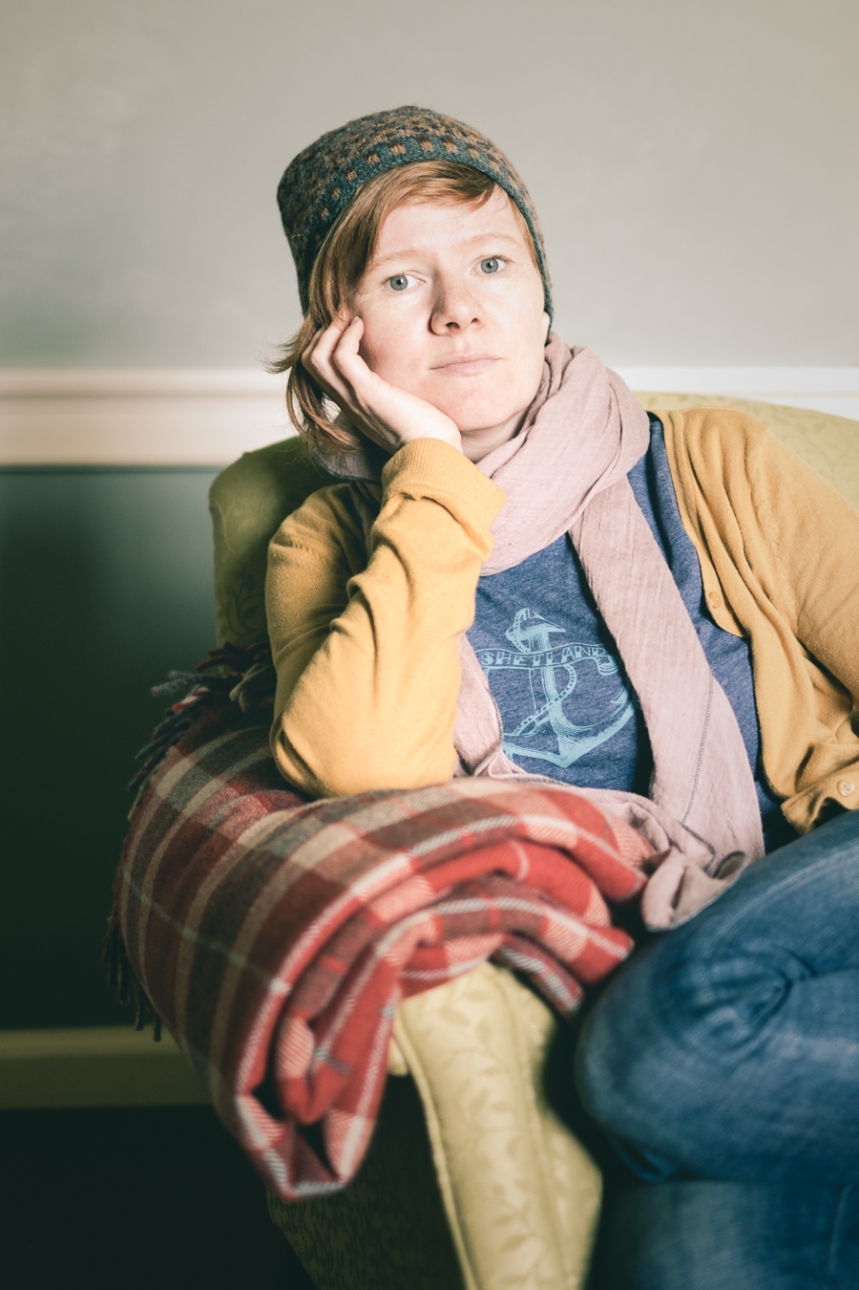
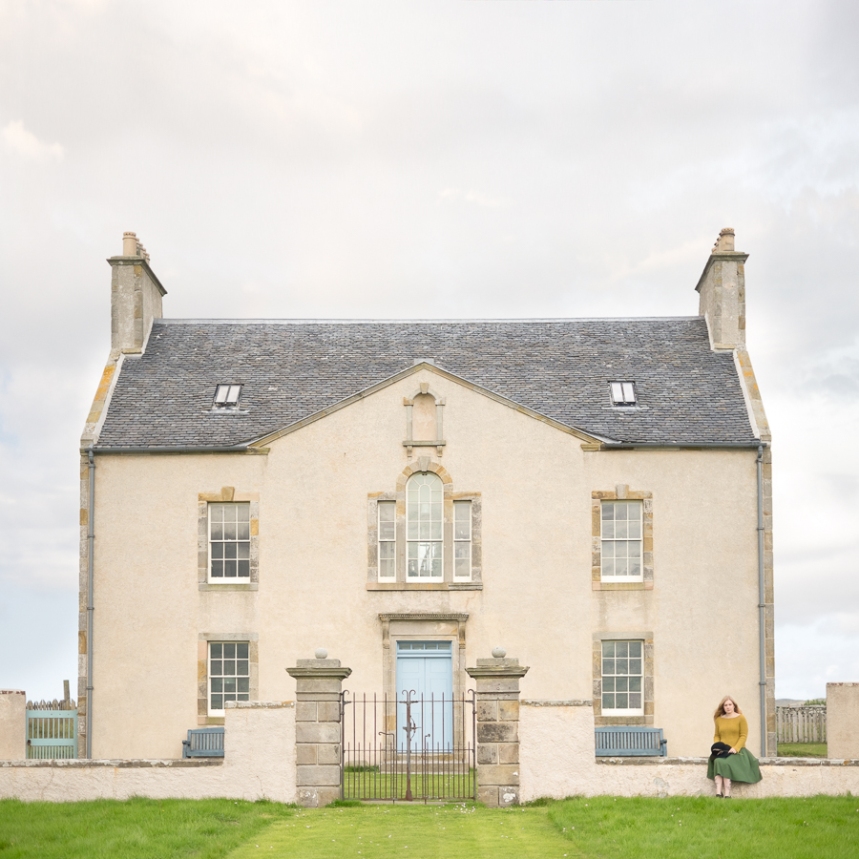

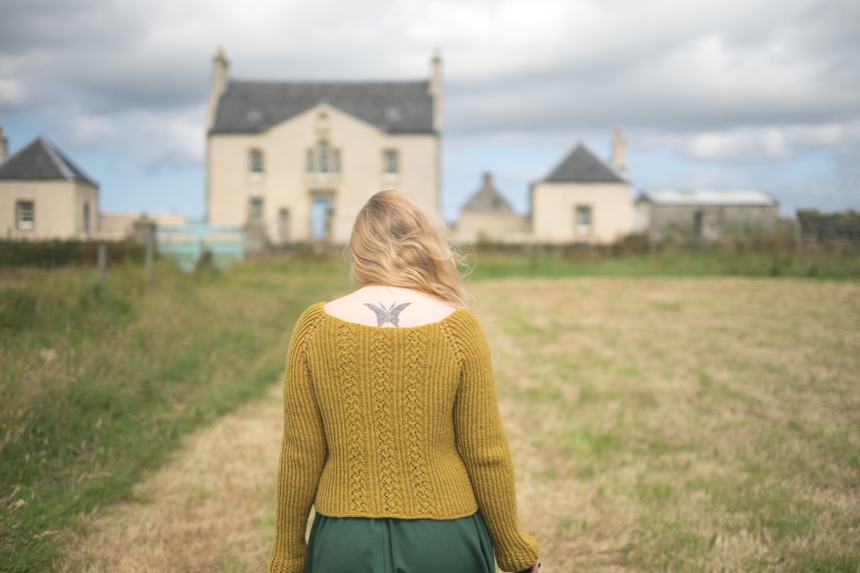
Reblogged this on The Knitting Class and commented:
two of my favorite designers in conversation providing an illuminating insight into the process of designing hand knits.
LikeLike
I recently made Gudrun’s Little Wave cardigan and I love it!
https://craftycrusader.wordpress.com/2015/02/20/fo-friday-little-wave-cardigan/
LikeLike
I really enjoyed this interview – thank you!
LikeLike
I have recently completed the Levenwick pattern by Gudrun working in Kilcarra Aran for a lovely tweedy finish. As you say they are very knitterly patterns. I shall definitely be purchasing the Shetland Trader Book Two. Thank you for all the excellent patterns, articles and information you bring us.
LikeLike
I love this post. In particular I enjoyed the discovery that I’m not the only designer who starts by making a design in one size (for my daughter, or myself), then does the grading for other sizes down the road. I also loved that the models are real people, not pros. Beautiful, evocative location. This is a book I’ll be purchasing!
LikeLike
How fun to read this interview from Gudrun. I think the Balta pattern might be worth the price of the whole book…though all the designs in there are so lovely!
LikeLike
Lovely interview, interesting to read about Gudrun’s inspiration and design process. I too love Gudrun’s designs. They are always very well written. Shetland Trader Book two is, together with Yokes, my favourite knit book to have been published in the past year!
LikeLike
What a beautiful knitwear collection! I fell in love with the setting, couldn’t be better to show off these gorgeous pieces. Thank you for the interview, Kate!
LikeLike
Your interviews are always so interesting, Kate. I feel very lucky to be able to eavesdrop on your guest’s design secrets.
LikeLike
Thank you. Having an interview like this really deepens a relationship with the designer and her work.
I will be purchasing the book after seeing this!!
LikeLike
Lovely interview. I do so want to explore Shetland – perhaps someday I’ll be able to do so in the company of Gudrun Johnston.
LikeLike
Thanks, lovely and interesting interview. I really like knowing about the person behind the design, adds to my knitting pleasure. I happen to have the Belmont cardigan on my needles at the moment.
LikeLike
Very educational. I cannot design garments at all, but I do design some shetland lace. Kate is asking the right questions, that we all want to know the answers too!
it’s a sneakpeek into the design kitchen of Gudrun and I have her book and swatched for the sweater Northdale. Gudrun reaches just the right balance with sweaters and designs, letting the pattern do the ‘work’ without needing any other thing.
Edinburgh? Does this mean Gudrun and her family will be leaving America permanently?
LikeLike
I was lucky enough to take a class with Gudrun when she was in Portland, Oregon at Happy Knits! She’s a great teacher and has the most lovely designs! Thanks for such a wonderful interview.
LikeLike
I’m so envious, elsabean! I’m originally from Portland and if I had known that Gudrun was teaching a class there, I would have signed up for the class and planned a visit to my family in Portland at the same time! Lucky you~
LikeLike
I really appreciate this in-depth conversation about the process, from first thought, the inspiration, until the finished garment. Thank You! All the explanations help me to feel more awed than ever about the work involved to bring us the patterns. What an amazing community to be a part of! Wow! Makes me proud to be a knitter!
The time and effort is so obviously from a place of deep love for the land, the history, the knitters who came before us, who continue to educate and inspire us.
A VERY HEART-FELT THANK YOU!
LikeLike
Great interview, Kate. As a designer, I’m always interested in another designer’s process—especially prolific ones like you and Gudrun—because I think there’s some secret floating around out there that I don’t know about. I’m glad to know that my process is very similar to Gudrun’s, but I have to rip back many more times than she does!
LikeLike